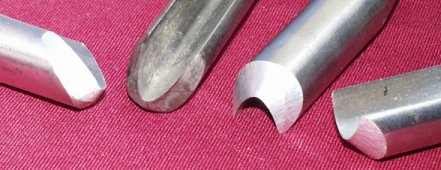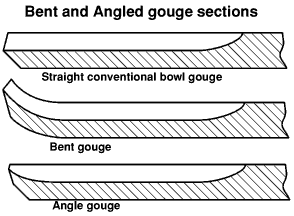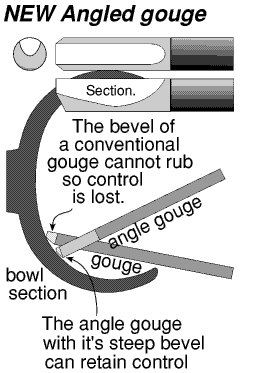
A personal view by Roy Child

Notice that my gouge on the left has two bevels at the tip - this is intentional. I find that the tool goes round tight curves inside bowls easier if I take the "heel" away and shorten the bevel.
Way back in 1983 I read an article by Douglas Owen in Fine Woodworking Magazine No 40 about bent bowl gouges and the idea stuck in my brain until very recently I came up with the idea of machining a gouge tip with the flute set at an angle. Mr Owen actually re-forged a gouge so that it curled up at the end - I have tried to illustrate the resulting section below. He used it inside a bowl with a slicing cut to get a clean finish.
 |
I have shown the section down through the middle of a gouge. The top one is a normal machined gouge and the curve at the right hand end of the flute is as a result of the radius of the milling cutter. The middle section is the result of re-forging to curl up the end. This gives a very efficient clean cut down at the bottom of a bowl. The bottom section is the result of not letting the milling cutter go all the way to the left, leaving an upward curved flute right at the tip of the gouge. This too gives a clean cut at the bottom of the bowl. |
Of course the tip gradually disappears as it is used and sharpened - but then you are left with a spare gouge which will always come in handy. You could think of it as a traditional gouge with a bonus. If you only use the tool for finishing cuts and sharpen it carefully with a stone instead of grinding it, it will last a surprisingly long time. More info on angle gouges.

Copyright 2003 Roy Child